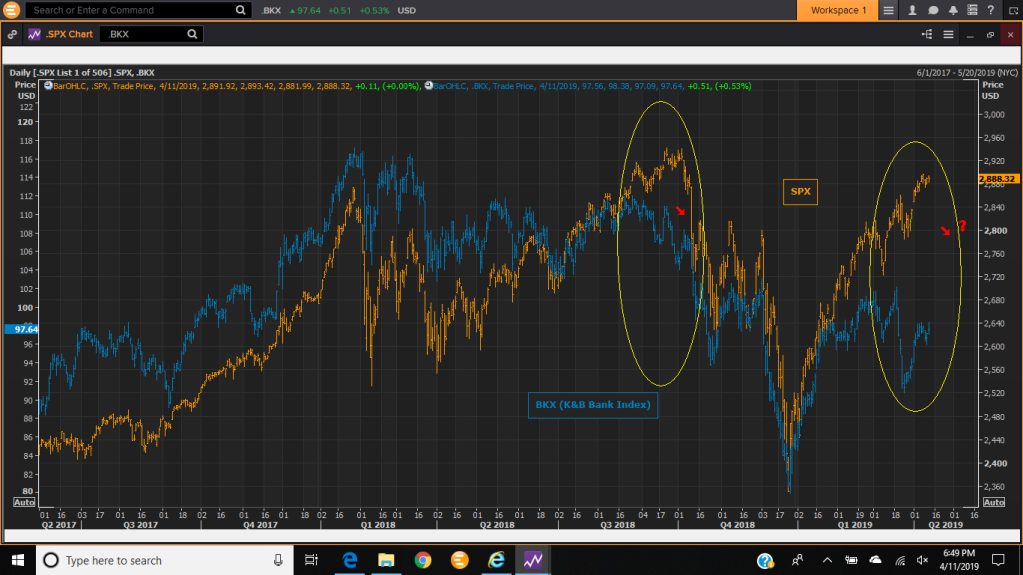Written by Bruce J. Clark
April 11, 2019
There’s an old cliché on Wall Street popular with traders of a certain vintage that says “as go the banks, so goes the market.” Its a reminder of the importance that the financial sector plays in confirming trends in corporate earnings and hence the condition of the broader equity market.
Without getting into the influence from Fed policy over the past decade, performance in bank stocks often tells us a lot about the underlying fundamentals in the economy. If the banks are profitable, chances are other sectors are as well.
The financials were a major driver of the nine year-long bull market run from the post-recession lows in 2009. Between March 2009 and the January 2018 peak, the K&B bank index (BKX) rose by 559%, hugely outperforming the S&P which advanced by (only)331%.
But since then, and as the economy slows, the banks have given up their leadership role. In a few months, the current economic expansion will overtake the 1991-2001 cycle as the longest on record. Impressive, but also old. These things have finite lives and the banks, as well as the bond market, are sensing the end.
The chart below shows how a selloff in the financials last September, driven by similar economic concerns, preceded a general decline by a number of weeks. Since then the Fed has stepped in, putting off plans for further rate hikes in the hope of extending the expansion. https://cnb.cx/2v2g2zw It might work, but poor price action has returned to the banks, suggesting that all the Fed accomplished was delaying the inevitable. We’ll learn more tomorrow (Friday, April 12) as JPM and WFC kick off Q1 earnings season. Antennae up.

